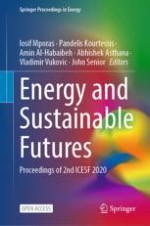13.1 Introduction
13.2 Modelling Individual Components
13.2.1 Compressor
13.2.2 Air Cooler
13.2.3 Storage Tank
13.3 Simulation and Results
13.3.1 Storage Tank Size
Tank volume (Litres) | 100 | 330 | 930 |
Energy Consumed (Kwh) | 1.63 | 1.43 | 1.99 |
13.3.2 System Pressure
System Pressure (Bar) | 8 | 9 |
Energy Consumed (Kwh) | 1.33 | 1.43 |
